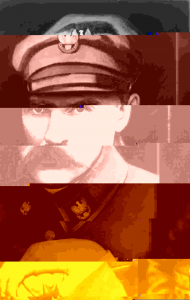
11/01/2016
By Justin Tomczyk
“Międzymorze” – Latinized as Intermarium – is a theoretical geopolitical union stretching from the Baltic Sea to the Black Sea. The concept was proposed by Jozef Pilsudski (1867-1935), a Polish statesman and military leader during the interwar period. The goal of Intermarium was to create a “Third Europe” between the two historic centers of power: Russia and Western Europe. While Pilsudski’s dream never materialized beyond limited Polish territorial expansion into parts of what are today Ukraine and Lithuania, recent political developments in the former Soviet Union and Warsaw Pact could make Intermarium both a reality and a necessity.
Events over the past decade have forced Eastern European policymakers to confront a changing regional paradigm. For many former Soviet republics Russian monopolization of gas and energy was begrudgingly accepted. It wasn’t until Russia repeatedly threatened the shut off of natural gas delivery to its neighbors that the Russian weaponization of energy became clear. Russia’s influence in Eurasia was long considered a shell of its former Soviet hegemony – its’ aging military technology and reduced projection capabilities were reassurances that prolonged conventional warfare would be too costly for the Soviet rump state. The 2014 seizure of Crimea demonstrated just how viable Russia’s military remains and served as a demonstration of the Kremlin’s model of asymmetric warfare in action. The emergence of a “hybrid war” doctrine – a mix of disinformation tactics, cyber warfare, political intervention, and military support in low intensity conflicts – has forced NATO to reshape their deterrence strategies. The establishment and expansion of the Eurasian Economic Union was a reminder to Western leaders that Russia retains its extraterritorial ambitions.
Theoretically, Poland, Ukraine and Lithuania would seem perfect allies. These three states share many triumphs and struggles in their common histories. The Slavic origins of Polish and Ukrainian language have led to a great deal of mutual intelligibility between each other – arguably more so than post-revolution Russian. A shared Catholic faith between Western Ukraine, Poland, and Lithuania is another binding factor between these three states. Finally there is the common geopolitical opponent that these countries share: Russia. Russia is currently locked in a frozen conflict with Ukraine that is focused on Crimea and Russophone territories on the eastern Ukrainian border. The presence of Lithuania’s Russian minority has raised questions of a hybrid-war scenario unfolding in the near future. Poland’s borders with the highly-militarized exclave of Kaliningrad and neighboring Belarus – one of Russia’s closest allies – has kept conflict with Russia a very real possibility.
There are certain flaws in this partnership. Lithuania and Ukraine remain cautious over Polish Intermarium-enthusiasm due to the presence of Polish minorities in territories along the border. Poland and Lithuania’s membership in NATO and the European Union have set a limit on the unilateral actions these countries may take in support of Ukraine due to their commitment to these organizations’ collective whole. While political reforms and anti-corruption measures have started in Ukraine many have grown doubtful over the ability of Ukrainian civil society to sustain this process. There is also the very real possibility that unresolved ethnic tension from the Second World War may complicate Intermarium integration – elements of the Polish government have called for Ukrainian recognition of the ethnic cleansing of Poles in western Ukraine by partisans and war-time militias.
All things considered, there are still tangible benefits in further cooperation between Lithuania, Poland and Ukraine. Several years ago these states formed a joint military force known as LITPOLUKRBRIG. The revitalization of this force for the purposes of training and exercise against hybrid-war techniques would contribute to maintaining the long-term security of the region. All three countries are members of critical regional blocs and may act as anchors for cross-bloc policy coordination: Poland with the Visegrad 4, Lithuania with the Baltic Council and Ukraine with GUAM (a regional organization made up of Georgia, Ukraine, Azerbaijan and Moldova). Finally, a productive relationship between these three states could lead to vocal support from both Lithuania and Poland for future Ukrainian membership in NATO and the European Union.